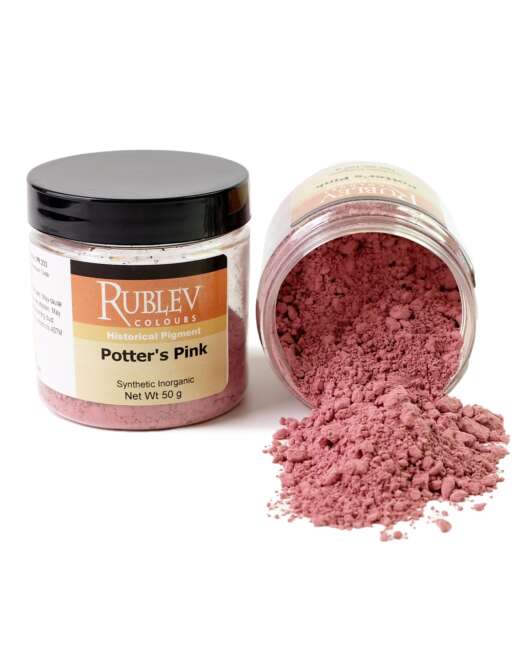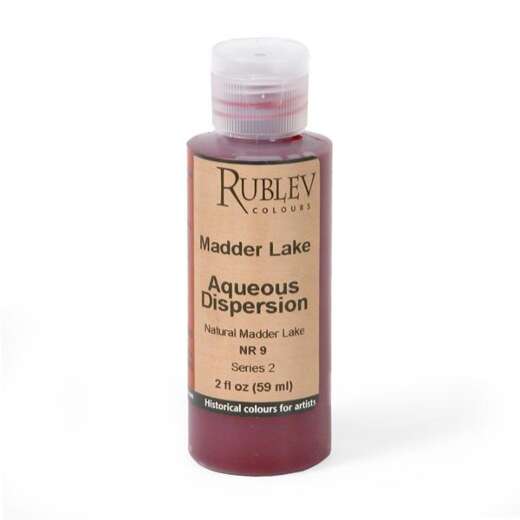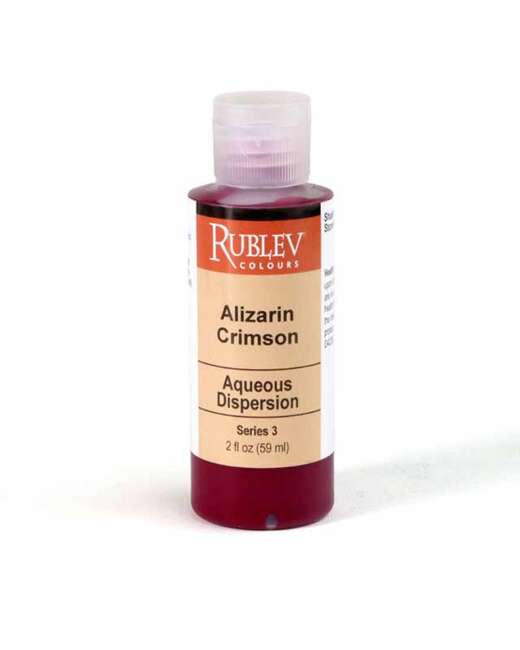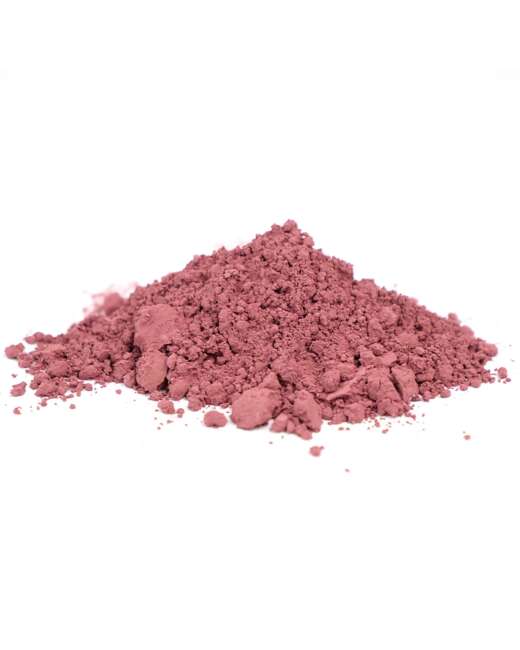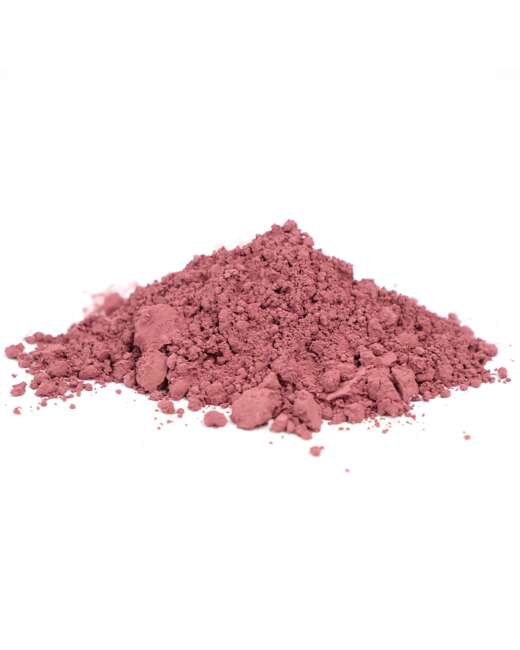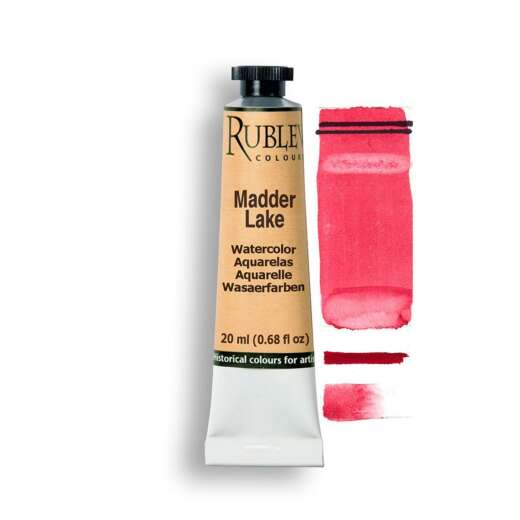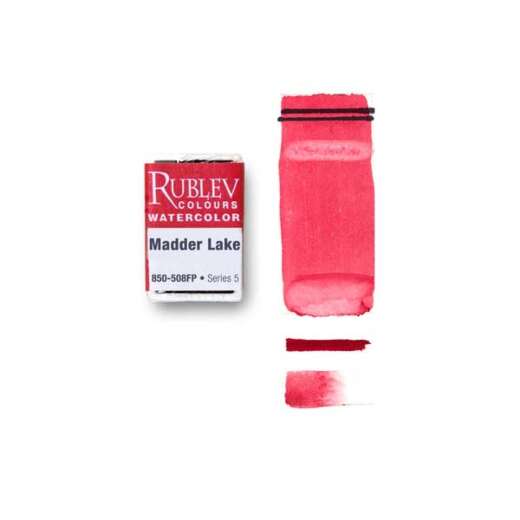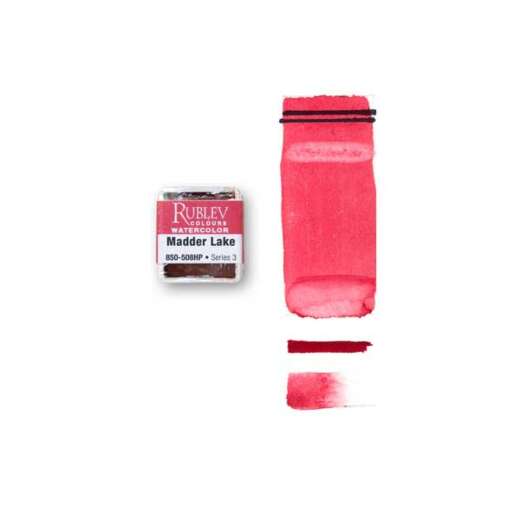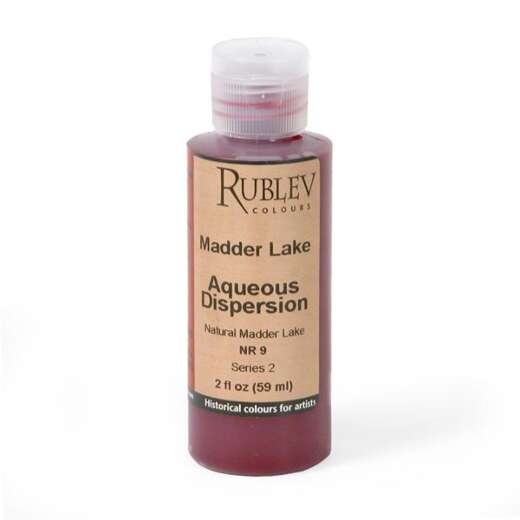Historical Pigment: Stil de Grain

 In his book, Les Elémens de Peinture pratique, Roger de Piles describes a typical palette of the 17th century:
In his book, Les Elémens de Peinture pratique, Roger de Piles describes a typical palette of the 17th century:
In oil painting are usually used eight principal colors: almost all others are derived and are composed of a mixture of these. They are arranged in a range roughly this way. 1. White lead. 2. Yellow ochre. 3. Reddish brown. 4. Lake. 5. Stil de grain. 6. Green earth. 7. Umber. 8. Bone or ivory black. These are the names of the eight colors and the order in which they are almost always placed on the palette.
An engraving of the palette arrangement (fig. 9) is included in the book published in 1766 (shown below).
According to de Piles, the pure colors were always placed along the top edge of the palette, the lightest hues nearest the thumbhole and the darkest furthest away. The position of each color on the palette helps us to understand their relative tones. For example, stil de grain is a lake pigment made from the dyestuff of unripe buckthorn berries. Watin (1785) describes this as ‘made from a decoction of graine d’Avignon, which comes from a tree called noirprun (Rhamnus cathartica L.) mixed with a little alum de glace, a sort of chalk or white marne from Champagne. The berry should be chosen with a golden yellow colour which gives a jonquil colour and can be varied depending on the amount of white which is mixed with it. Yellow stil de grain made of Avignon berries chrged with alum gives a transparent pretty yellow’.
Osborne (1849) states that this pigment is prepared with “a calcareous or marly earth[1], alum and a decoction of Avignon berries.” The pigment is very transparent, making bright yellow tints, but a masstone that is yellow-brown.
Dyestuff from the Rhamnus berries is the base of stil de grain lake (also called Buckthorn lake). The berries of the common buckthorn (Rhamnus cathartica L.) or Avignon buckthorn (Rhamnus saxatilis) were often the source of dyestuff that was prepared into a lake pigment. The principal coloring component of the lake is a flavonoid called xanthorhamnin. Field (1841) states that this preparation is a fugitive yellow, the darker variety called brown-pink.

According to Bersch (1901), stil de grain is prepared by boiling the crushed berries with water and mixing the extract with a solution of alum. “The lake is then precipitated by the addition of powdered chalk. As a rule, 500 parts of water are used to 100 parts of berries, 20 parts of alum are added to the decoction, and the mixture poured upon 75 parts of finely powdered chalk.” Another recipe describes the plant berries as being steeped in lye (potash or potassium carbonate), then precipitated with alum (aluminum potassium sulfate) to create a translucent yellow lake pigment. The addition of tin, copper or iron salts can attain different hues. The temperature also affects the resulting color: a lemon-yellow lake is obtained up to 50° C, and a darker, orange-colored lake is obtained at 100° C.
Merrifield (1849) additionally states that this term refers to those pigments not only pure yellow, but to those inclined to green. This is generally true of the berries of the various Rhamnus plants, as the color depends on the berry's ripeness at the time of harvesting.


Botanical illustration of the common buckthorn (Rhamnus cathartica) at the top and a photograph of the Avignon buckthorn (Rhamnus saxatilis).
Most of our experiments making this lake resulted in a pigment of an ocherous yellow color and could not be positioned on the palette in the fifth place, but closer to the yellow ocher. The lake was possibly mixed with natural clay earth in the 17th century to make a darker-toned pigment.
This is easy to understand when we read what Osborn (1849) wrote about the lake pigment:
Stil de grain is the name given by the French to a yellow color produced by a decoction of Avignon berries (graines) precipitated by alum, and of different shades according to the preparation, which is made, for the base, of different proportions of Troy White[2] (a species of chalk or marle, found in the environs of Troyes in France.)* A writer we have often quoted says that the stils de grain, composed of the oxide of lead and the Avignon berry, are of more solidity. Brown (or English) Stil de grain is prepared with a calcareous or marly earth, alum, and a decoction of Avignon berries: a treacherous pigment, like the yellow stil.
* In some English books of the last century, this frail color is termed Yellow Wash and Yellow-berry Wash, or Yellow Wash of French Berries. It is the same pigment that is known variously as Dutch Pink, English Pink, and Italian Pink. The brown is Brown Pink.
Osborne describes various preparations, and it follows that many different tones were made with the lake pigment as a base. Lead oxide or litharge gives the lake pigment a more opaque and earthy color that would subsequently be less fugitive. Calcareous earth gives the lake pigment more solidity or opacity and a better body in oil paint.
Variations of color from yellow to brown hues were possible depending upon the ripeness of the berries used to prepare the dyestuff and the minerals used to prepare the lake pigment. The variation known as Brown Pink would likely be closer to the stil de grain of Roger de Piles’ palette.
Notes
1. Marly earth or marl or marlstone is a calcium carbonate or lime-rich mud or mudstone that contains variable amounts of clays and silt. The dominant carbonate mineral in most marls is calcite. Still, other carbonate minerals such as aragonite, dolomite, and siderite may be present, which gives it anywhere from an off-white color to brown.
2. Troy white (sometimes named Troyes white) is chalk from the vicinity of Troyes, France, that was not considered suitable for oil painting in the early 19th century. {Tingry, 1830)
Sources
Bersch, Josef (1901) The manufacture of mineral and lake pigments: containing directions for the manufacture of all artificial artists’ and painters’ colours, enamel colours, soot and metallic pigments. Arthur C. Wright, Translator. London: Scott, Greenwood, 1901, p. 348.
de Piles, Roger (1766) Les Élémens de Peinture Pratique. Charles-Antoine Jombert, editor. Arkstée & Merkus. 1766, pp. 97–113.
Field, George (1841) Chromatography; or, A treatise on colours and pigments: and of their powers in painting. London: Tilt and Bogue, 1841, p. 159.
Merrifield, Mary Philadelphia (1849) Original Treatises, Dating from the XIIth to the XVIIIth Centuries, [o]n the Arts of Painting,: In Oil, Miniature, Mosaic, and on Glass; of Gilding, Dyeing, and the Preparation of Colours and Artificial Gems; Preceded by a General Introduction; with Translations, Prefaces, and Notes..., Volume 1. In Two Volumes. London: John Murray, Albemarle Street, 1849, p. clxiv.
Osborne, Laughton (1849) Handbook of Young Artists and Amateurs in Oilpainting: Being chiefly a condensed compilation from the celebrated manual of Bouvier, with additional matter selected from the labors of Merimée, de Montabert and other distinguished continental writers in the art in seven parts. New York: J. Wiley, 1849, p. 53.
Tingry, Pierre François (1830) The Painter’s & Colourman’s Complete Guide; being a practical and theoretical treatise on the preparation of colours and their applications to the different kinds of painting: in which is particularly described the whole art of house painting. 3rd Edition of the painting section of “The Painter’s and Varnisher’s Guide”, Editor’s Preface Signed: J. J. London: Sherwood, Gilbert and Piper, 1830, p. 53.
Watin (1773/Edition of 1785) L’Art du Peintre, Doreur, Vernisseur. 4th Edition. Paris: Chez L’auteur.



